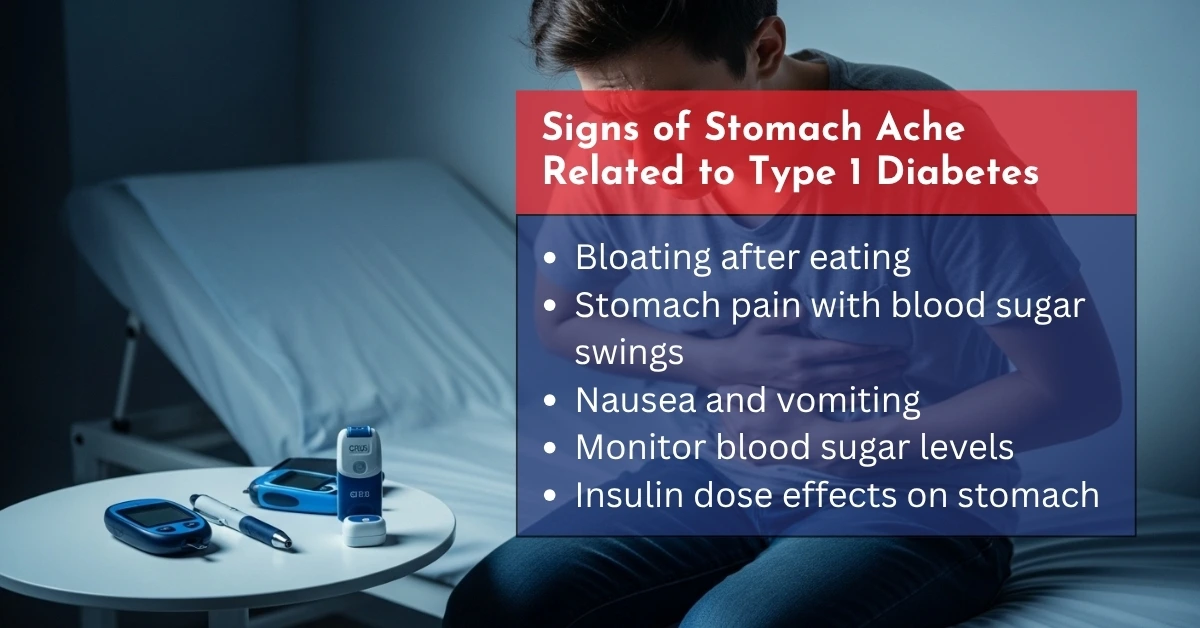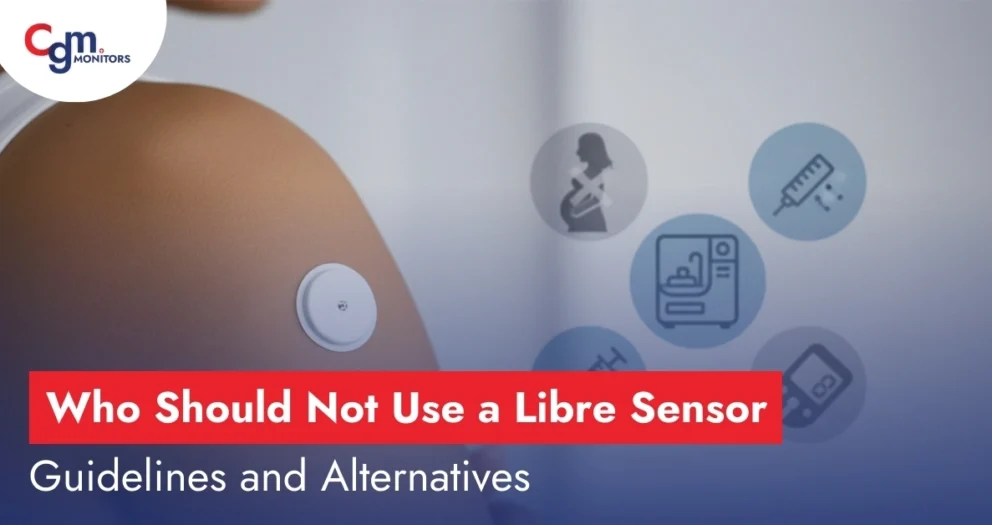Table of content
Living with Type 1 diabetes brings many challenges, and one of them is managing digestive issues. If you’re experiencing stomach pain, you’re not alone. A holistic view of type 1 diabetes stomach ache, background reasons, and how to manage them.
Type 1 Stomach Ache – Gastroparesis Condition
Gastroparesis is a condition in which you experience delayed gastric emptying. Symptoms noticed include bloating, nausea, vomiting, stomachache, and early satiety (feeling full while not having eaten enough).
In type 1 diabetes, nerves and blood vessels inside the stomach are damaged, which leads to the gastroparesis condition known as ‘diabetic gastroparesis’. Both high and low blood sugar can mess with your stomach, leading to diabetic ketoacidosis.
Signs of Stomach Ache Related to Type 1 Diabetes

- A type 1 diabetes digestive complication could involve bloating, indigestion, and pain after eating.
- If you feel nausea and vomiting in type 1 diabetes, especially with fluctuating blood sugars, it’s important to check your blood sugar levels.
- Insulin and stomach pain can also go hand-in-hand, especially if insulin doses cause drastic changes in blood sugar levels.
Questions Asked By the Patients Related to Stomach Ache
How Severe Can Type 1 Diabetes Stomach Pain Be?
Diabetic gastrointestinal problems may become severe. If you experience stomach cramps in diabetics frequently, it could point to a deeper issue like diabetic gastroparesis. The pain can range from mild discomfort to severe cramping or bloating that makes it hard to eat or digest food properly.
Are These Stomach Aches Related to Gastroparesis?
Often, diabetes and digestive issues are due to gastroparesis, but diabetic diarrhea and stomach pain are also common. This happens when nerve damage from long-term high blood sugar levels affects the digestive tract. Nausea and vomiting in type 1 diabetes may also accompany these symptoms, making meals feel like a battle.
Don’t Worry! A type 1 diabetes cure is on its way – here you can read more about the Type 1 diabetes cure.
Can Type 1 Diabetes Digestive Complications Be Avoided?
- Prevention can be tough, but managing blood sugars is key. Keeping them in control helps reduce nerve damage and the likelihood of diabetes-related constipation and diabetic gastroparesis.
- Regular monitoring of your insulin and stomach pain relationship is essential. You may need to adjust your insulin or meal timing.
Treatment for Type 1 Diabetes Stomach Ache
- Management techniques like monitoring gastrin (a hormone engaged in gastric acid secretion), iron, and vitamin B12 levels annually can prevent complications. If you’re low in iron or have pernicious anemia, supplements can help.
- Medication for diabetic gastroparesis, such as prokinetics or anti-nausea drugs, may provide relief. In severe cases, a gastric pacemaker might be considered.
Impact of CGMs and AID Systems
Continuous glucose monitors (CGMs) such as the Freestyle Libre 3 Plus Sensors, can help keep your blood sugar in check, preventing spikes and dips that contribute to high blood sugar, stomach pain or hypoglycemia stomach discomfort. Real-time monitoring gives you a clearer picture of your blood sugar trends, which can help prevent stomach cramps in diabetics from blood sugar fluctuations.
Latest CGM sensors like this one are compatible with automatic insulin delivery (AID) systems as well. Such as the Libre 3 Plus is compatible with Beta Bionics iLet Bionic Pancreas and Twiist, which is about to hit the USA market.
Prevention: Lifestyle Tips to Manage Stomach Pain
Managing diabetes, both type 1 and type 2, requires a multi-dimensional approach. A well-balanced Diet, possibly with restricted carbohydrates (up to a certain extent, in case of strict avoidance, make sure you keep your ketones in view), and Exercise hold EXTREME importance.
- Diet & Exercise: Try maintaining a well-balanced fiber-rich diet with some good fats, while not overloading your stomach. Exercise regularly and without stressing yourself out; you may even divide your walk time into chunks.
- Hydration: Staying hydrated is key, especially if you’re dealing with diabetic diarrhoea and stomach pain.
- Routine Blood Sugar Monitoring: Keep an eye on your blood sugar with CGMs and make adjustments to your insulin regimen as needed.
- Meal Timing: Eating smaller, more frequent meals can help prevent diabetes-related constipation and diabetic stomach bloating.
If you want to know further about Lifestyle Recommendations for Lowering A1C. Just click the previous phrase with no delay.
Summary:
Stomach pain in Type 1 diabetes is no joke. Whether it’s due to diabetic gastroparesis, insulin and stomach pain, or diabetes-related constipation, it’s important to manage blood sugars effectively and seek medical advice. Regular monitoring, balanced diet, regular exercise, adequate sleep, and stress management are the keys here. Hope this helps!
What else are you looking for? Let us know in the comments.
Disclaimer: This blog is for informational purposes only and does not constitute medical, legal, or professional advice. While we strive for accuracy, errors or omissions may occur.







Write a comment
Your email address will not be published. All fields are required